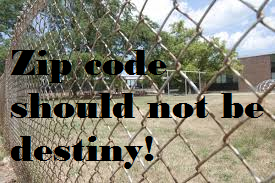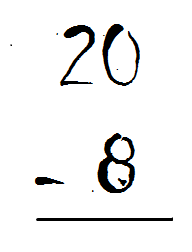Big numbers, little numbers, numbers taken out of context, because facts like my title are always taken out of context. It’s not like you can walk a neighborhood and put an “X” on every ninth door. My home district’s middle school claims 0% poverty, with the high school at 4.1% poverty. The high school in the district from which I retired stands at 100% poverty.
Poverty overwhelms us. Unsurprisingly, we tend to duck the issue. Or pick around it in random bits and pieces. Tent cities bad. Panhandlers bad. Government response bad. Lack of government response bad. Immigrants probably bad except maybe the ones with jobs who pay taxes.
I stumbled on an interesting example of what I just wrote recently. While listening to “Promoting Mental Health Among Children and Youth,” a webinar with US Senator Edward J Markey and US Surgeon General Vivek H. Murthy, I was struck by the ABSENCE of the very idea of poverty.
I support Markey’s bill, designed to protect the privacy and mental health of young people. Advertising targeted to youth and online privacy should be central topics of public discussion. Social media has created a toxic environment, especially for our girls, that easily spirals out of adolescent control.
Markey and Murthy are to be applauded for promoting a national conversation on high mental illness rates in today’s kids. The numbers are staggering.* “In 2021, 30% of female high-school students said they had seriously considered suicide during the year leading up to the survey, while about 24% had made a suicide plan, 13% had attempted suicide, and 4% required medical care related to an attempt. Among boys, those percentages were about 14%, 12%, 7%, and 2%, respectively. And while the percentage of high-school boys who said they had contemplated suicide increased only modestly from 2019 to 2021, the rate increased significantly among girls: from 24% to 30%.”
Again, nearly one in three adolescent girls considered taking their lives in 2021.
Markey and Murthy told us many more school counselors and mental health therapists are needed. Teachers already know that. Many parents must surely be aware that mental health services are failing to keep up with demand. Markey and Murthy emphasized that kids must be taught how to handle conflict, a skill we are not systematically teaching. Our students must learn to handle the ubiquitous challenges of social media. The webinar centered on wanting to maximize social media benefits to kids while minimizing harms. Murthy stressed the importance of attacking the stigma associated with mental illness, making it easier for kids and others to admit they need help. The webinar also strayed into other issues, such as problems related to reimbursement for telehealth.
But Markey and Murthy bypassed the issue of poverty. The topic of equity did not enter until 11:39, over an hour into the discussion, when a young woman in the audience brought up the topic. Equity is all about poverty. Poverty underlies a great many of the issues the two men discussed; social inequities are steeped in financial causes and effects.
Yet beyond praising the young woman for her question, no one touched poverty.
I love the idea of a digital marketing bill of rights for teens, of banning targeted advertising to children and erasing those kids’ data. At the webinar’s end, though, I was left with a sense of a dragon hiding in plain sight. All of the issues in that webinar were affected by financial wherewithal — or the lack of it.
At the end of the day, what forces have inspired that 30% of female high-school students to seriously consider suicide? How is possible that 1 in 25 required medical care related to an attempt? Flash bulletin: The 1 in 50 boys requiring medical help after suicide attempts should not just disappear because of their lower rate of suicide attempts, either. According to statista.com, in 2019, approximately 21.05 adolescents between 15 to 19 years of age lived in the US. That breaks down to around 10.5 million boys, which translates to 210,000 young men requiring medical help after suicide attempts, and that number does not include younger boys.
Here’s a last, sobering connection that the webinar missed:
From an article in US News and World Report: https://www.usnews.com/news/healthiest-communities/articles/2020-01-27/higher-poverty-tied-to-increased-youth-suicide-risk-study-shows (Gaby Galvin January 27, 2020):
“Young people are more likely to die by suicide in high-poverty communities, a new study indicates.
Youth suicide rates have climbed in the U.S. in recent years, and the new study, published Monday in the journal JAMA Pediatrics, examines where young people may be most at-risk. The analysis of nearly 21,000 deaths over a decade shows that in U.S. counties with poverty rates of at least 20%, people 5 to 19 years old were 37% more likely to die by suicide than people in counties where less than 5% of residents lived in poverty.”
I don’t want to put down Markey and Murthy’s efforts. Social media seldom makes kids feel MORE connected. Instead, it tends to foment FOMO — the Fear of Missing Out. Often it makes adolescents feel worse about themselves as they inevitably make comparisons. They see their friends out having fun, going to places where they are not included. Friends, acquaintances and others who have somehow been “friended,” may appear to be living nearly perfect lives. If Senator Markey wants to try to wrestle the social media dragon, he has my full support.
But I thought I’d put this out to readers because I think it’s a perfect example of how we overlook the dragon in the room. Something about money makes people’s eyes glaze over. The dragon’s just too huge. Markey and Murthy take on anorexia and bulemia, but leave pure hunger alone.
Fighting dragons can be messy, but we owe it to our kids to put on our dented armor and pick up our chipped and battered lances.

https://www.hhs.gov/sites/default/files/sg-youth-mental-health-social-media-advisory.pdf
*https://time.com/6275975/teenage-girls-suicidal-thinking-2021/

